
 |
|
|
#1 |
|
Member
Join Date: Dec 2004
Location: Sint-Amandsberg (near Ghent, Belgium)
Posts: 830
|
Amongst the lot I found in a stable were also some African arrows. Five are Pygmee, probably from the Ituri forest in Congo.
I have had Pygmee arrows before and I am always amazed at the craftmanship these little items show. The barbed arrowheads are well forged. Also some of the shafts show great detail. Some have iron binding, others are carved. I wonder why this is ? Are these markings made by the owner to show that it's his arrow ? All these arrows are small and lightweight. They wouldn't do much harm. I guess they are poisoned when in use. The barbs help the arrow to stick into the skin of a pray. Here are some pics. The longest arrow measures 53 cm. The smallest arrowhead (without the barbs) only measures 2 cm.   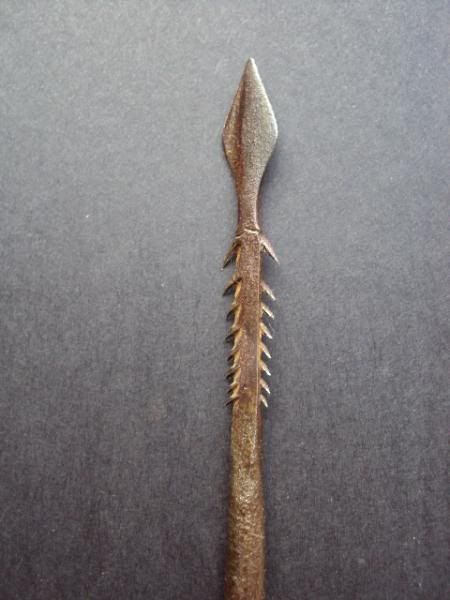 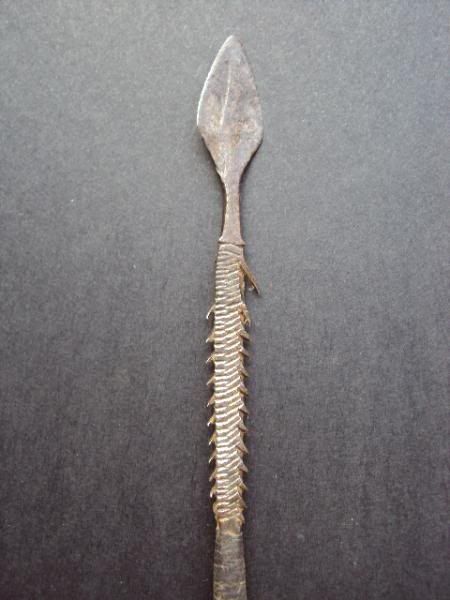 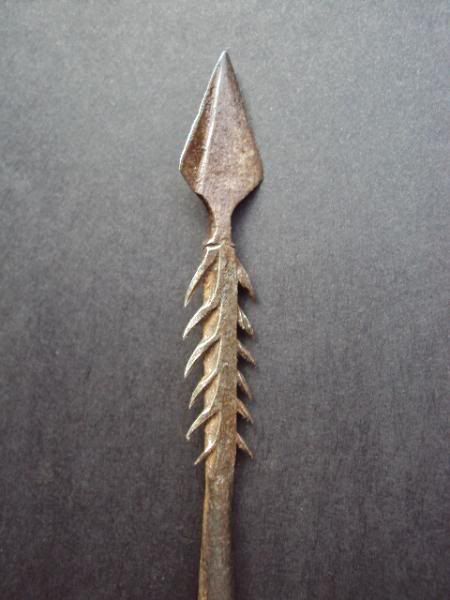 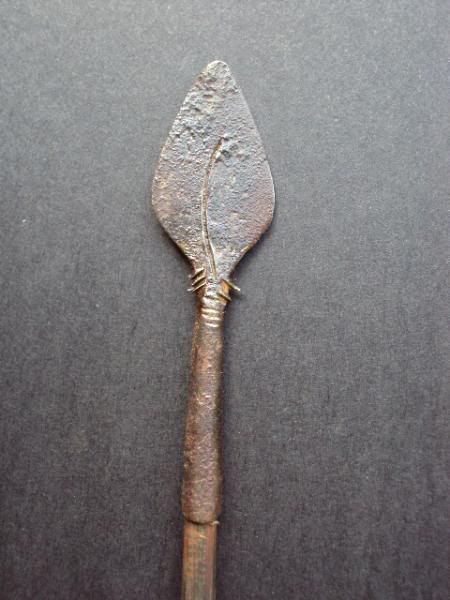 |
|
|

|
|
|
#2 |
|
Member
Join Date: Dec 2004
Location: Sint-Amandsberg (near Ghent, Belgium)
Posts: 830
|
And just look at the detail on two of the shafts :
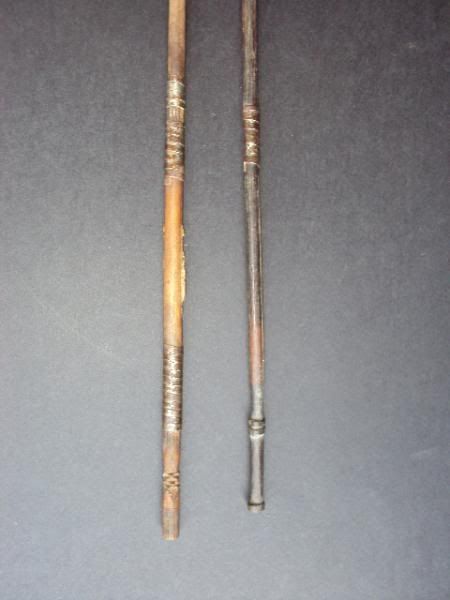 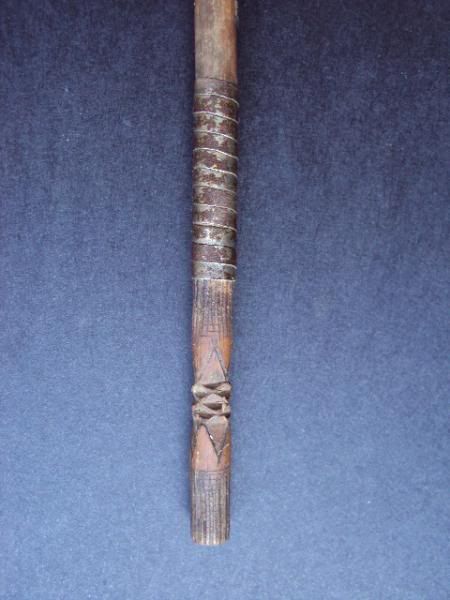 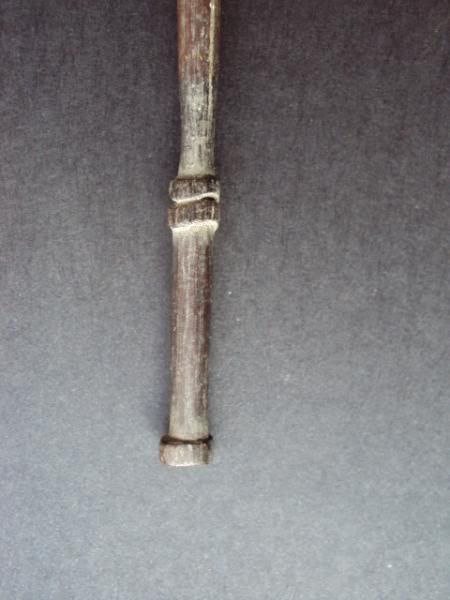 |
|
|

|
|
|
#3 |
|
Member
Join Date: Jan 2008
Posts: 1,430
|
Hi
Very interesting - my sort of stuff. I've read somewhere about African arrows having distinguishing features such as you mention, to establish which hunter killed the prey, also to identify which arrows when in the quiver might be poisoned etc. Regards |
|
|

|
|
|
#4 |
|
Member
Join Date: Dec 2004
Location: Sint-Amandsberg (near Ghent, Belgium)
Posts: 830
|
I've seen quivers attributed to Pygmees, but in a lot of photos one sees them without. They seem to hold a bunch of arrows in the same hand which holds the bow.
Identification is probably the best answer for the decoration on the shaft.  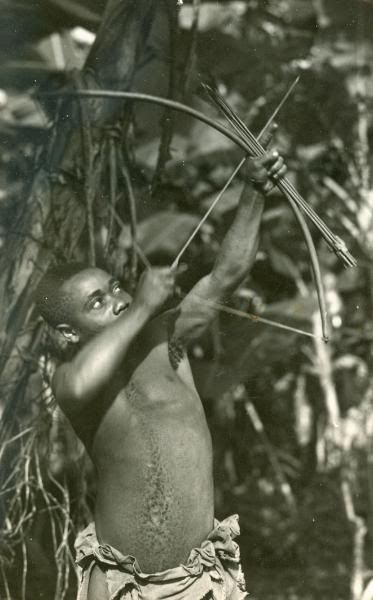 |
|
|

|
|
|
#5 |
|
(deceased)
Join Date: Dec 2004
Location: OKLAHOMA, USA
Posts: 3,138
|
CONGRADULATIONS VERY NICE ARROWS
 FROM THE BOOKS I HAVE READ ON BIG GAME HUNTERS AND EXPLORERS OVER THE YEARS. THE METHODS USED BY PIGMYS WERE TO SHOOT POSION ARROWS THEN THE ELEPHANT WOULD BE FOLLOWED UNTIL IT GOT SICK AND COULD GO NO FARTHER WHICH COULD TAKE DAYS. IN THE MEANTIME MESSENGERS WOULD HAVE GONE TO ALL THE LOCAL GROUPS AND INVITED THEM TO THE FEAST AND EVERYONE THAT COULD TRAVEL STARTED IN THE DIRECTION OF THE SICK ELEPHANT. IT WAS MUCH EASIER TO TAKE THE TRIBE TO THE ELEPHANT INSTEAD OF BRINGING THE ELEPHANT HOME ESPECIALLY IF YOU WERE A PYGMY.  THE POISON IS SAID TO BE SLOW WORKING ON A LARGE ANIMAL BUT VERY LONG LASTING SO I WOULD BE CAREFUL OF ANY OF THEIR ARROWS. THE ARROW MARKINGS WOULD PROBABLY TELL WHICH TRIBE AS WELL AS WHICH HUNTER IT BELONGED TO AND NO DOUBT THEY RECEIVED SOME CHOICE CUT OF ELEPHANT FOR THEMSELVS AND THEIR FAMILY. THEY WERE GREAT TRACKERS SO I DOUBT THEY LOST MANY ELEPHANTS UNLESS THERE WAS A STORM OF SOME SORT IN WHICH CASE I WOULD IMAGINE ALL THE HUNTERS WOULD LOOK UNTIL THEY FOUND THE ELEPHANT. I READ THAT THEY DIDN'T MIND EATING ELEPHANT WHEN IT WAS BEYOND WHAT WE WOULD CONSIDER FOOD SO TIME WAS ON THEIR SIDE IF THE SCAVENGERS DIDN'T GET IT ALL FIRST. THE OTHER METHOD I READ ABOUT INVOLVED THEIR SPEARS WHICH ARE SHORT BUT HAVE A VERY BIG WIDE BLADE. THEY WOULD MANAGE TO GET CLOSE TO THE ELEPHANT AND THEN RUN UNDER IT AND THRUST THE SPEAR FAR UP INTO ITS BELLY LEAVING THE SPEAR AND RUN OUT THE OTHER SIDE AND BACK TO GET AWAY. THE SPEAR CONTINUED TO DO DAMMAGE AS THE ELEPHANT MOVED AND ON A GOOD STRIKE YOU DIDN'T LEAVE ENOUGH OF THE SHAFT STICKING OUT SO THE ELEPHANT COULD NOT PULL IT OUT. THIS COULD ONLY BE DONE IN HEAVY COVER AS ELEPHANTS HAVE MANY GOOD SENSES AND TO TRY IT IN THE OPEN WOULD NOT BE WISE. IN HUNTING ELEPHANTS PYGMYS ARE VERY CAREFUL AND WISE. 
|
|
|

|
 |
|
|